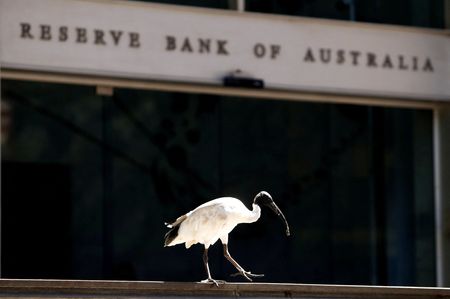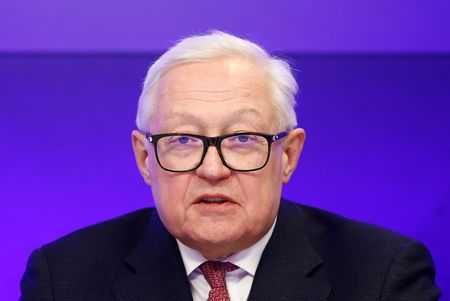By Wayne Cole
SYDNEY (Reuters) -Australia’s central bank has a problem communicating that has injected an element of unpredictability into interest rate policy when global uncertainty is already high, and its proving costly for investors.
It all stems from an April shake up at the Reserve Bank of Australia that shifted rate-setting power entirely to a new nine-member Monetary Policy Board.
At just its second meeting in May, the board decided to cut cash rates by a quarter point to 3.85% and sounded more dovish than analysts expected, even briefly considering an easing of 50 basis points given the uncertainty caused by U.S. tariffs.
This, combined with some soft economic data, led investors to wager heavily on another cut in July while a Reuters poll of 37 economists found 31 expected an easing.
Crucially, investors were encouraged to pile into these positions because the RBA did not push back on expectations, as they had often done in the past.
Imagine their surprise, then, when the MPB held rates steady in a rare spilt decision of six to three, leaving many investors with painful losses.
Speaking to the media after the decision, RBA Governor Michele Bullock explained that the bank could no longer offer guidance because the rate decision was up to the board alone and it could not be pre-empted.
Essentially, the RBA had changed the way it communicates to markets, without telling those markets it had changed.
“Since no single MPB member can front-run the whole Board, future inter-meeting communication is unlikely to endorse or push back against market pricing,” said Luci Ellis, chief economist at Westpac and a former assistant governor at the RBA.
“This implies that markets will be surprised more often than in countries like the United States, where the central bank puts more weight on avoiding surprising the market.”
RBA A MINORITY ON ITS OWN BOARD
Since then, a benign inflation report now has investors equally convinced the MPB will cut rates to 3.60% at its next meeting on August 12, in part on the hope it would not want to shock twice in a row.
Yet the MPB’s unusual composition makes for added uncertainty as it has just two RBA officials, along with a top Treasury official and six part-time external members with backgrounds in economics, business and banking. The latter are appointed by the Treasurer of the day with input from the RBA.
Markets have little to no idea what the views of these six are, and that is unlikely to change as there are only vague plans for each to make one public appearance a year.
It is now quite possible RBA board members could find themselves out-voted on rates, yet the governor would still have to front the media to defend a decision they did not agree with.
And, since the votes are unattributed, there might be times when it would be impossible for investors to know if the central bank had been overturned.
“It’s even easier for the governor to be voted down because they’re clearly outnumbered by externals members,” said Jonathan Kearns, chief economist at Challenger and a former top official at the RBA. “I think the board is probably feeling now more emboldened to disagree with the governor.”
“It does add a little bit more risk into things, but it’s up to the RBA to provide good analysis and well formulated recommendations that are convincing to the external members.”
The new format marks the RBA as something of an outlier in global central banks. The Fed and European Central Bank have boards made up of only central bankers, while the Bank of England has five central bankers and four professional economists on its board of nine.
Votes of individual board members are made public for the Fed and the BoE, which have both become more divided in recent months.
Speaking to an economic forum recently, RBA Deputy Governor Andrew Hauser conceded the July decision was less predictable for markets than it should have been and said the board was still “feeling our way” on policy.
He insisted this unpredictability would not be the new norm, but cautioned there would be “shocks from time to time.”
Investors betting on a rate cut are fervently hoping next week will not be one of those times.
(Reporting by Wayne Cole, additional reporting by Stella Qiu; Editing by Lincoln Feast.)











